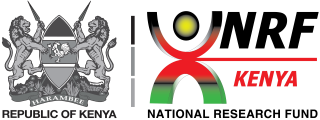Publication: The quality of the Treated effluent, Raw Influent and Wastewater-polluted Water sources Used for Irrigation of Vegetables in Urban and Peri-Urban Areas of Nairobi County, Kenya
No Thumbnail Available
Total Views 3
total viewsTotal Downloads 0
total downloadsDate
2021-05
Authors
Journal Title
Journal ISSN
Volume Title
Funder
N/A
Publisher
International Journal of Scientific and Research Publications
Cite this Item
Abstract
Nearly half of the wastewater generated in Nairobi ended up treated in the treatment facilities. However, cases of irrigating vegetables with raw influent and untreated wastewater water by urban and peri-urban farmers in Nairobi have been noted. Despite the importance of wastewater in in Kenya’s urban and peri-urban agriculture, information on the quality of water used for irrigation areas is lacking. This study sought to establish physicochemical and microbiological composition of water used for irrigating vegetables in Ruai ward, Nairobi County, Kenya. A preliminary survey was conducted to identify sources of water used for irrigation. Sources of water used for irrigation were then categorized into the treated effluent, raw influent and wastewater-polluted water sources. From these sources sampling points were randomly selected and georeferenced. Parameters investigated for physicochemical characteristics are total dissolved solids (TDS), aluminium (Al), cadmium (Cd), chromium (Cr), cobalt (Co), copper (Cu), zinc (Zn) and lead (Pb). Microbiological organisms determined in the samples are total coliforms and Escherichia coli. Concentration of TDS was determined using evaporation method, while Al, Cd, Cr, Co, Cu, Zn and Pb concentrations were determined using atomic absorption spectrometry. Total coliforms and E. coli were determined through inoculation. The results revealed TDS were generally within the recommended level (1200 mg/l), except the raw influent, which recorded 1582 mg/l. Range in Al, Cd, Cr, Co, Cu and Zn was 2.8 – 13 mg/l, 3.6 – 4.2 mg/l, 1.2 – 5.0 mg/l, 3.2 – 5 mg/l, 0.4 – 5.0 mg/l, 0.4 – 6.8 mg/l, respectively. Lead with a concentration of 6.8 mg/l was detected only in the treated effluent sample. Recommended concentrations of Al, Cd, Cr, Co, Cu, Zn and Pb are 5, 0.5, 1.5, 0.1, 0.05, 2 and 5 mg/l, respectively. It was further observed total coliforms and Escherichia coli in the samples exceeded recommended concentrations of <1000 minimum probable number per litre (< 1000 MPN/l) and nil/ 100 ml, respectively. The results showed that most of parameters measured exceeded the recommended water quality limits. Therefore, the wastewater cannot for crop irrigation.
Description
Keywords
Masinde Muliro University of Science and Technology
